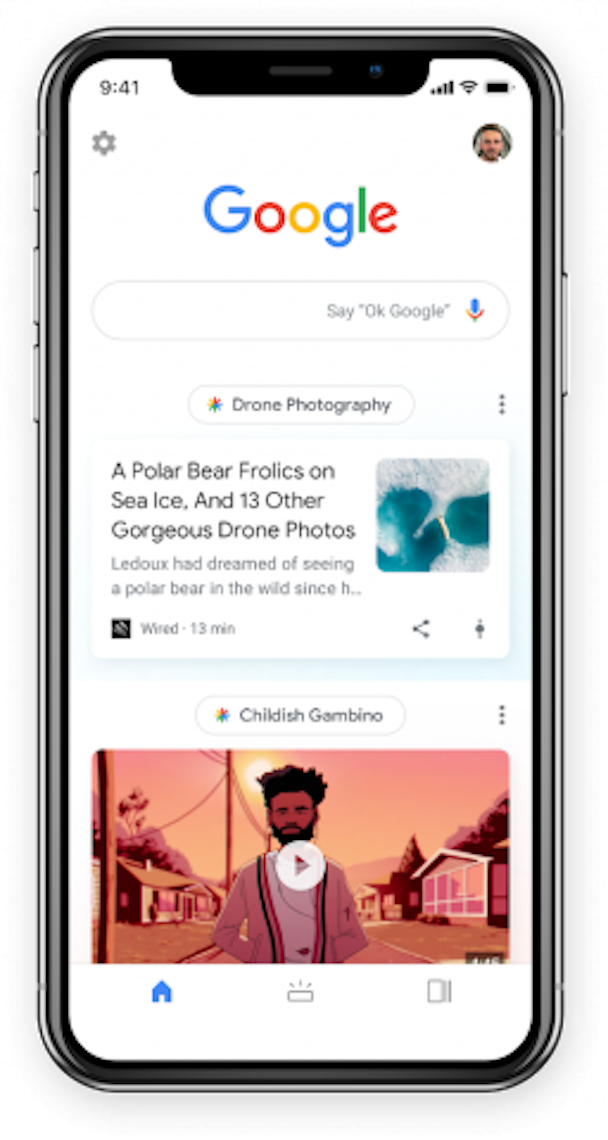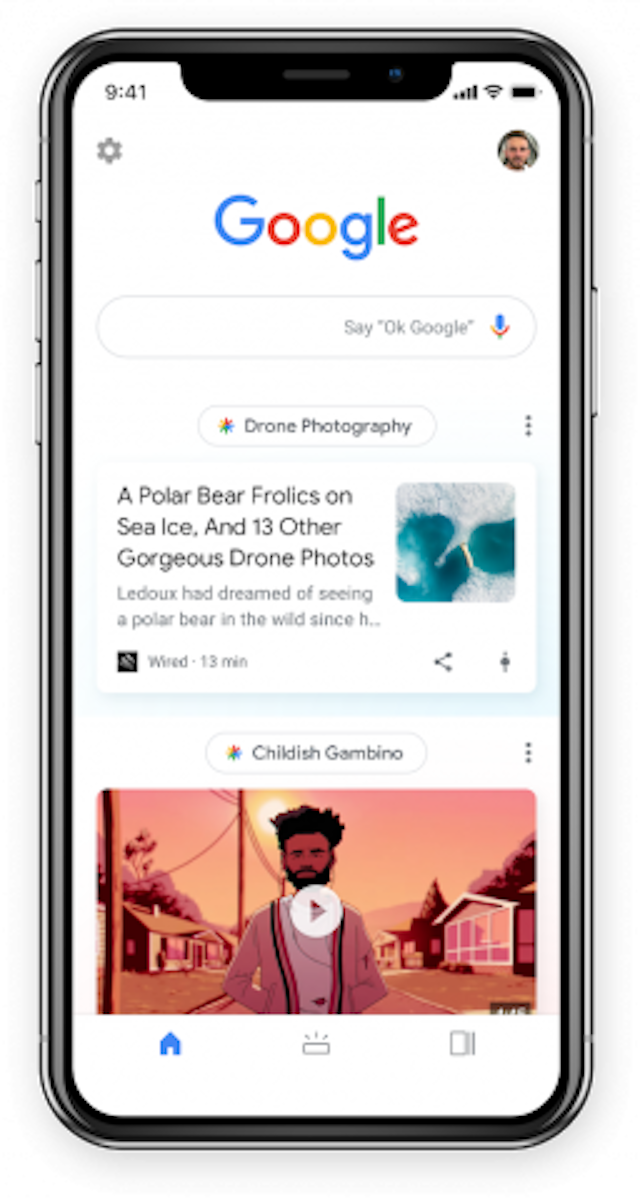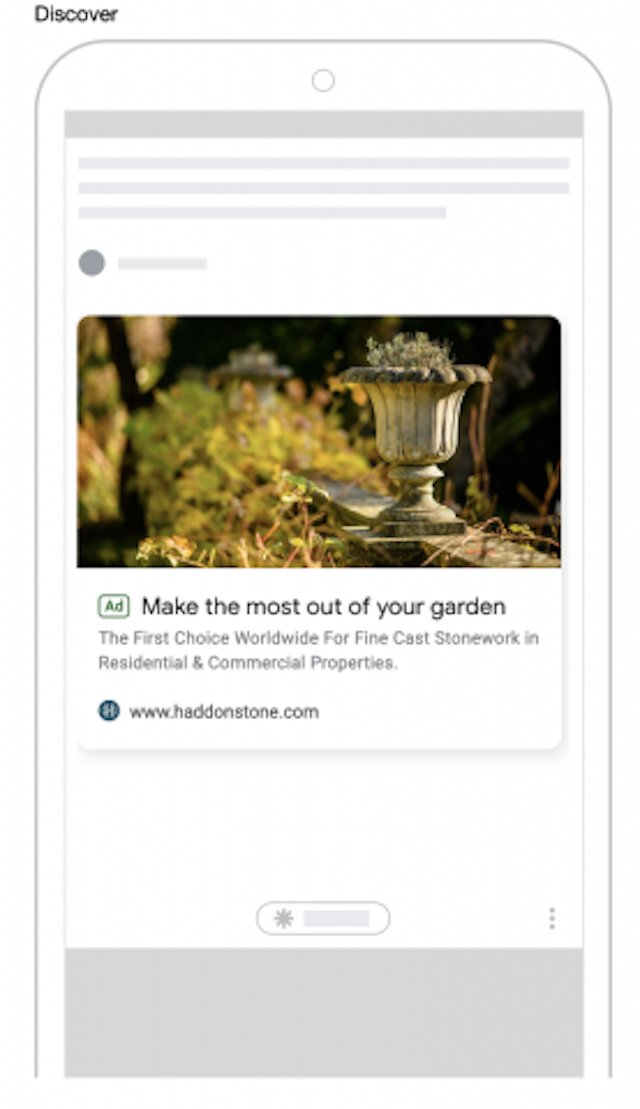Google Discovery Ads: What are they, and should you be using them?
Google Discovery Ads are changing the future of the way we advertise. By teaming up with AI, it means we can always stay one step ahead of the customer.

Hallam provide a succinct guide for using Google Discovery Ads.
Following several months of suspense after an announcement during The Google Ads Innovation Keynote in May, Google finally released Discovery Ads in Beta, back in November 2019.
At Hallam, the main question our PPC team have heard from our clients following this announcement has been: “What are Discovery Ads?”. Without having the Google app installed on your phone, it’s likely that you may not have heard of Google Discover before.
What is Google Discover?
Currently used by 800 million people, this number continues to grow. While 30 years ago people would read the newspapers whilst drinking their morning coffee, they’re now reading news sites and scrolling through social.
Google Discover - the new name for Google Feed - helps users to take these actions one step further, by allowing all iPhone and Android users who have the Google app installed, to personalise their newsfeed by following or unfollowing chosen topics.
Google Discover looks like this:

Unlike Google Search - designed to answer a specific search query - Google Discover’s aim is to provide an answer before the user even asks the question; which, by the looks of it, is where AI is heading in the next few years.
As a user increasingly interacts with Google Discovery, they’re providing a more detailed overview of what they do and do not want to see. This enables Google to learn more about that individual, tailoring their newsfeed to their preferences.
While this may sound scary initially, in the age of machine learning and AI, we need to remember that machines are not our enemies. Far from taking our lives from us, they’re simply changing it by taking over and improving everyday routines, so that simple tasks like reading the news becomes easier for us.
What are Google Discovery Ads?
When Google rolled out Discovery Ads in Beta form, they provided PPC practitioners with the ability to start targeting ads based on Google Discover features.
The purpose of these ads are to show your customers something they want before they even know they want it. So, rather than responding to a pre-existing demand, they generate demand, which is what search ads are typically utilised for anyway.
Despite their name, Discovery Ads don’t just appear on Google’s Discover app. They also show up on Gmail, which has over 1.5 billion monthly users, and YouTube, which is the second biggest search engine in the world.
What do Google Discovery ads look like?
Google Discovery Ads are very similar to Display Ads, in that they’re designed to be extremely visual and engaging.

They are also available in the form of carousel ads, allowing advertisers to use multiple images so they can encourage people to engage and interact with them.
What are the targeting options?
Much like the Google Display Network, Google Discover allows you to target custom, affinity and in-market audiences. You can also target remarketing audiences, which is a great way to re-engage with your existing website audience through the use of another medium.
The majority of the targeting rules of Google’s Display Network apply to Google Discover; with the idea being to target people based on their interests, or what they’re searching for. For example, if you’re a tour operator and want to advertise discounts for holidays to Croatia, then it makes sense to target people who are actively searching for trips to Croatia. Similarly, if you’re a seller of garden ornaments, then you’ll want to target people who are searching for garden furniture.
Should I try it?
Google Discovery Ads has presented a new step in advertising, allowing you to expand your inventory by placing your ads in front of people before they even know they want your product or service.
However, the standard is not yet at the same level as Google Display, or even Facebook or Instagram inventory. So, if you’re wondering whether or not to try it, then you should only do so if you’re placing them in front of the right people, and your ads are engaging and tailored to their preferences.
With increasing talks of advertisers stepping away from keywords to focus on targeting audiences, Google Discovery Ads provides an exciting opportunity to do so, with companies able to engage with specific audiences through such a fast-growing medium.
Irina Holliday, senior paid media consultant at Hallam.
Content by The Drum Network member:

Hallam
We’re a multi-award winning full-service digital agency based in the UK, and a trusted partner to some of the world’s biggest national and international brands.
Putting...

